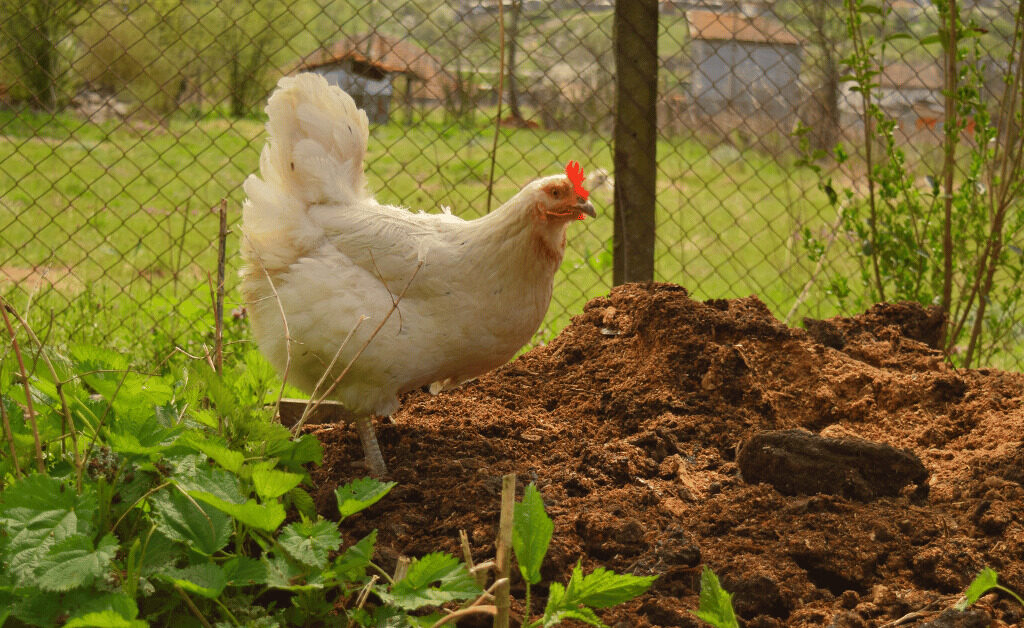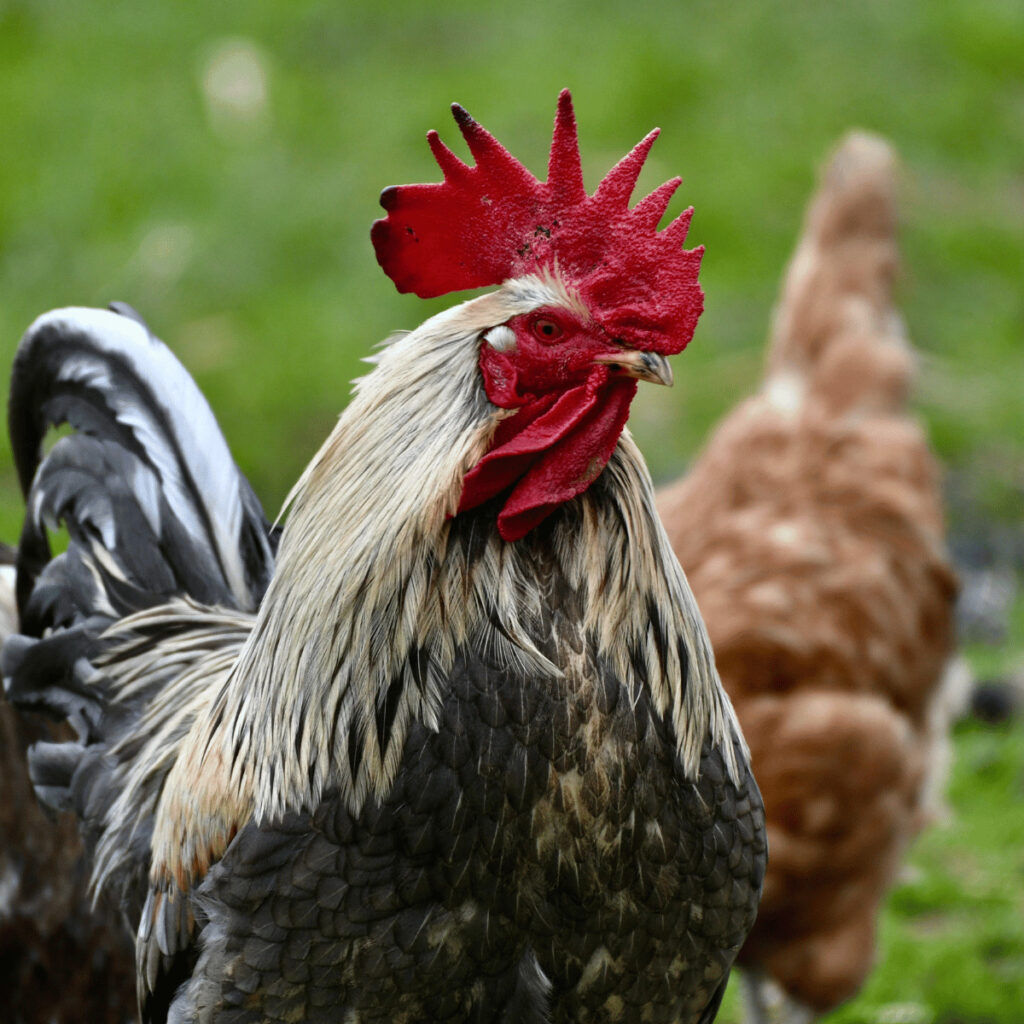Chicken Tractors: The Ultimate Composting System for Gardeners

Welcome to the fascinating world of Chicken Tractors—a revolutionary composting system that taps into the natural behaviors of chickens to create a continuous engine of fertility for your garden. This ingenious design can be applied on scales ranging from small urban gardens to large commercial farms, and it offers a sustainable and efficient way to enrich your soil while also caring for your feathered friends.
The term “chicken tractor” was first introduced by authors Andy Lee and Patricia Foreman in their book, “Chicken Tractor: The Permaculture Guide to Happy Hens and Healthy Soil.” It has since been popularized by permaculture expert Geoff Lawton, whose educational videos provide practical insights on implementing this composting method in diverse settings.
In this article, we’ll explore the ins and outs of chicken tractors, from their underlying principles to their environmental benefits and practical applications. Whether you’re a backyard gardener, a small-scale farmer, or a sustainability advocate, we’re confident you’ll find this method a powerful tool in your journey towards more sustainable, efficient, and eco-friendly gardening.
Understanding Chicken Tractors
As we delve deeper into the concept of chicken tractors, it’s important to note that despite the name, no heavy machinery is involved. This term, which was coined by authors Andy Lee and Patricia Foreman, describes a system that synergistically combines the natural behaviors of chickens with gardening practices. The result is a sustainable method of enhancing soil fertility and boosting garden productivity.
So, what exactly is a chicken tractor? In its most common form, a chicken tractor is a movable chicken coop without a floor, allowing the chickens direct access to the ground beneath them. However, the term has evolved to include a variety of designs, and not all of them are mobile. For instance, Geoff Lawton, a renowned permaculture expert, uses a stationary coop in some projects, such as his “Greening The Desert Project” in the Jordan River Valley. This coop even has a concrete floor below the compost, demonstrating the versatility of chicken tractor designs.
Regardless of the specific design, the core principle of a chicken tractor remains the same. It’s a system that leverages the natural behaviors of chickens—scratching the ground, consuming pests and weed seeds, and producing manure—to benefit the garden or farm. This creates a win-win situation, with chickens enjoying a varied diet and gardeners benefiting from natural pest control, weed management, and enhanced soil fertility.
The impact of chicken tractors extends beyond individual gardens and farms. For example, the “Greening The Desert Project” has shown the transformative power of permaculture principles, including the use of chicken tractors, in revitalizing arid landscapes over the past decade.
In essence, chicken tractors reflect the permaculture principle of harmonious integration of landscape and people. Whether mobile or stationary, small-scale or commercial, they provide food, reduce work, and harness the natural habits of chickens to promote sustainable and productive gardening.
Building Your Own Chicken Tractor
Constructing your own chicken tractor is a rewarding endeavor that provides a sustainable method for enriching soil fertility and caring for chickens. The design of the chicken tractor depends on a variety of factors, including the size of your property, the number of chickens you own, and your specific gardening or farming goals.
The Basic Structure
A chicken tractor typically consists of a coop for the chickens to roost and lay eggs, and an attached run that provides them with access to fresh ground. The coop should be secure to protect your chickens from predators and harsh weather, well-ventilated, and equipped with nesting boxes and roosting bars to accommodate the chickens’ natural behaviors.
Composting Area
The run or composting area is where the process of soil enrichment occurs. In this space, chickens scratch, forage, and deposit manure, contributing to the composting process. If you’re building a stationary chicken tractor, similar to Geoff Lawton’s “Greening The Desert Project”, this area can be set up with a compost pile where the chickens naturally turn and mix the compost materials.
Movable vs Stationary Chicken Tractors
Choosing between a movable and stationary chicken tractor largely depends on your circumstances. A movable chicken tractor is an excellent option for larger properties, providing chickens with fresh ground while evenly distributing their manure. For limited or challenging terrains, like steep slopes, a stationary chicken tractor may be more practical. This design lets you manage the composting process in a fixed location, which can be beneficial if you want to minimize the effort of moving the coop or oversee the composting process closely.
Designing for Small Spaces
For urban gardeners with limited space, a smaller chicken tractor design is an option. This might include a compact coop and run, with a smaller composting area. Despite its size, even a small chicken tractor can significantly contribute to soil fertility, offer a natural form of pest control, and supply fresh eggs daily.
Building your own chicken tractor, regardless of the scale, can be a practical and fulfilling step towards more sustainable and productive gardening. Remember to consider your specific needs and circumstances when designing your chicken tractor to ensure it’s a good fit for both you and your chickens.
How to Implement a Chicken Tractor: Insights from Geoff Lawton’s Video
Geoff Lawton, a world-renowned permaculture expert, has offered valuable insights into the utilization of chicken tractors. In his detailed video guide, Lawton explains how chicken tractors can be used to fertilize kitchen gardens of various sizes, turning them into powerhouses of productivity and sustainability.
Fertilizing Different Scales of Gardens
Lawton emphasizes that chicken tractors can be implemented in various contexts, from small urban spaces to large commercial farms. The potential for generating compost is impressive. For instance, in a small urban setting of just 16 square meters, a chicken tractor can yield an average of one cubic meter of compost per month. This is enough to fertilize 1000 square meters of garden. Larger systems, using around 30 chickens, can generate a cubic meter of compost every week, enough to keep ½ an acre fertile. Commercial setups with 50 chickens can produce a whopping two cubic meters of compost per week, sufficient for maintaining a full acre of land.
Composting Cycle and Pile Creation
The key to this productivity lies in the cycle of composting and the creation of compost piles. Each week, 1/3 of a cubic meter of bedding is placed under the chicken roost, where it becomes enriched with chicken manure. This manured bedding then acts as the base of a new compost pile, which is topped with 1/3 of a cubic meter of large animal manure and another 1/3 of a cubic meter of food scraps or garden weeds.
Over the course of the week, the chickens naturally disassemble the pile, spreading the material as the inner core heats up and composting begins. The pile is then reassembled, with the previously spread material forming the new core. This cycle is repeated weekly, and after five weeks, a pile is ready as compost.
The Urban “Chicken Tractor on Steroids”
For those operating in an urban setting, Lawton introduces the concept of a “chicken tractor on steroids.” This process involves two compost piles: one that is turned throughout the week, and another that is kept in a cage. Every week, the caged compost pile is released, and the spread-out compost pile is restacked into the cage. This system yields two cubic meters of compost every other month, totaling 12 cubic meters of compost a year. The output from a 16-square-meter chicken tractor can thus provide complete fertility for 1000 square meters (1/4 acre) of garden production, in addition to providing 8-10 eggs a day.
Creating Compost Piles
Lawn clippings and pulled weeds are added under the chicken roost for 6-8 weeks, where they are manured and initiate the composting process. When ready, the bedding from beneath the roost is removed, stacked with manure and food scraps, and put through the composting cycle. The process of adding bedding beneath the roost begins anew.
Chicken Tractor Guidelines for Cold Climates
Implementing chicken tractors can be influenced by local climates. For gardeners and farmers in USDA Zone 7 and similar Scandinavian climates, specific considerations can help ensure their chicken tractor system thrives.
Weather Conditions and Seasonality
USDA Zone 7 and Scandinavian climates feature cold winters and moderate summers. Such seasonal changes should be considered when designing and managing your chicken tractor. It’s essential that the chicken coop is well-insulated to protect your chickens from harsh winter conditions. During the summer, ample shade and fresh water should be provided to prevent overheating.
The composting process can slow down during the cold winter months due to decreased microbial activity. To counteract this, consider adding more high-nitrogen materials, like chicken manure or fresh green plant matter, to your compost pile to maintain its temperature and decomposition rate.
Chicken Breeds
Certain chicken breeds are better adapted to cold climates and can be more suitable for use in chicken tractors in USDA Zone 7 and Scandinavian climates. Breeds such as the Rhode Island Red, Sussex, and Plymouth Rock are known for their hardiness in cold weather. These breeds are also good layers, providing the added benefit of egg production.
Diversity and Resilience: The Icelandic Chicken
For our Scandinavian readers, another breed worth considering is the Icelandic chicken. This breed, native to Iceland, is hardy and known for its adaptability to different climates. It thrives in various settings, from farms and ranches to backyard conditions. Icelandic chickens are not only excellent layers, but they also display a strong tendency to forage and dig in manure and compost piles, which makes them a perfect fit for a chicken tractor system. Their medium size, alertness, and ability to fly quite well contribute to their survivability in various conditions. Despite their small carcass weight, Icelandic chickens lay a good number of medium-sized white to pale tan eggs, often laying over a long lifetime and during winter months.
Another key aspect of Icelandic chickens is their genetic diversity. Unlike many modern chicken breeds that often have a high degree of inbreeding, Icelandic chickens have been shown to be genetically diverse. This diversity can contribute to the overall health and resilience of the flock. In the world of permaculture and sustainable agriculture, we value diversity, recognizing that it is not only a strength but also a key element in ensuring food security. Maintaining diverse populations of animals, just like plants, helps to ensure the robustness and resilience of our food systems.

Acquiring Icelandic Chickens
While Icelandic chickens offer many benefits, obtaining them may not be straightforward, particularly if you’re located outside of Scandinavia. The rarity of this breed and its distribution primarily within Iceland can pose challenges for interested gardeners and farmers.
However, don’t let this deter you. There are breeders and poultry farms that specialize in Icelandic chickens, and with a little research, you may find a source near you. If you’re a breeder of Icelandic chickens and sell outside of Scandinavia, we’d love to hear from you! Please send us your information so we can make it available to our readers. By doing so, we hope to make these resilient and hardy chickens more accessible to those interested in creating a diverse and sustainable chicken tractor system.
Plant Species
When it comes to choosing plants for your chicken tractor area, I’ve found that if your chicken tractor is stationary, cover crops may not be feasible as they likely won’t survive the chickens’ scratching and foraging. Instead, consider planting fruit and berry bushes around your chicken tractor.
Speaking from personal experience, I plan to plant Aronias around my coop. They’re hardy, they do well in various soil conditions, and they drop their berries late in the season. This provides valuable nutrition for my chickens during the winter months when other food sources may be scarce. To ensure a steady supply of fresh forage for your chickens, you might also consider planting a variety of fruit and berry plants that ripen at different times throughout the season.
Remember, every garden and every situation is unique. By considering your specific climate and local conditions, you can optimize your chicken tractor system for maximum productivity and sustainability.
Conclusion: Chicken Tractor Guidelines for Cold Climates
As we’ve explored throughout this article, chicken tractors present an ingenious method for enriching soil fertility, managing pests, and sustaining healthy chickens. Whether you have a small urban garden or a larger commercial farm, chicken tractors can be an invaluable addition to your sustainable agriculture toolbox.
Chicken tractors synergistically combine the natural behaviors of chickens with composting processes. The result is a continuous cycle of fertility that can significantly enhance the productivity of your garden or farm. By making small adjustments, such as selecting suitable chicken breeds and plants, you can adapt this system to various climates, including colder regions like USDA Zone 7 and Scandinavia.
The methods and insights shared by Geoff Lawton, particularly his “Chicken Tractor on Steroids,” demonstrate the impressive potential of chicken tractors at different scales. From creating compost piles to managing them effectively, these systems can become a cornerstone of your sustainable gardening or farming practices.
As you move forward, remember that every garden and every situation is unique. Your chicken tractor system can be tailored to meet your specific needs and circumstances. From the design of the chicken coop to the selection of plants and chickens, each element of your chicken tractor can be customized to create a thriving ecosystem.
If you’re an advocate for sustainable agriculture, a nature-lover, or simply a gardening enthusiast, we encourage you to explore the world of chicken tractors. Consider the potential benefits it could bring to your own garden or farm. Who knows? Perhaps your next step towards a more sustainable future involves a chicken tractor.
Discover the Power of Composting: A Natural Alternative to Chicken Tractors
Interested in exploring more sustainable and efficient ways to enrich your soil? Dive into the world of composting! Learn about the fascinating differences between hot and cold composting and how they can revolutionize your gardening practices.
Unearth the secrets of creating nutrient-rich soil that your plants will love, without the need for chickens. Whether you’re a seasoned gardener or a beginner, understanding composting can take your gardening to the next level.
Ready to transform your waste into a valuable resource? Click here to read our comprehensive guide on hot and cold composting. Don’t let your waste go to waste!


